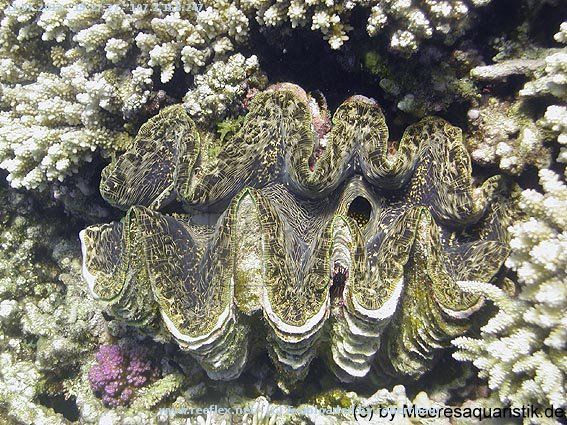This story about Tridacna costata was originally published over three years ago. Almost nothing more has come to our attention regarding the little known Tridacna costata from the Red Sea, so here’s a refresher
You know, when the first reports surfaced of a new giant clam species, Tridacna costata, being discovered in the Red Sea using molecular analysis, we were suspicious that this was one of those cryptic species that only only biologists really care about. The photos provided in the original description only showed a little bit of the morphological differences between T. costata and T. maxima. The description of T. costata seemed to weigh more heavily on genetics to prove the speciation of the rare Red Sea giant clam but one of the main distinguishing characteristics of this species is the “deeply folded, almost zig-zag dorsal shell pattern”. We were recently contacted by a Reef Builders reader who happens to live near the Red Sea and he tried his hand at eating one but before he realized their scarcity.
According to Mina, the clam “smelled and tasted very bad” and he won’t be fishing them anymore but at least he made some photos and video of the giant clam before and after it was consumed. Mina has made it clear that since he has learned more about this species, he has taken it upon himself to discourage it’s harvest by the local population who believes that the clam is a treatment for diabetes, among other things. The photos and video of Mina’s T. costata clearly show that this species has much more pronounced shell “teeth” which are almost triangular in outline compared to the usually smoothly undulating dorsal shell margin of T. maxima. Follow the break for more pictures of the and a video of the rare Tridacna costata from the Red Sea. Big thanks to Mina Ashraf for sharing his content with us. And before you ask, yes that is that the Red Sea in the background of the pics.

The photo below shows a live T. costata on the left and T. maxima on the right.Â








